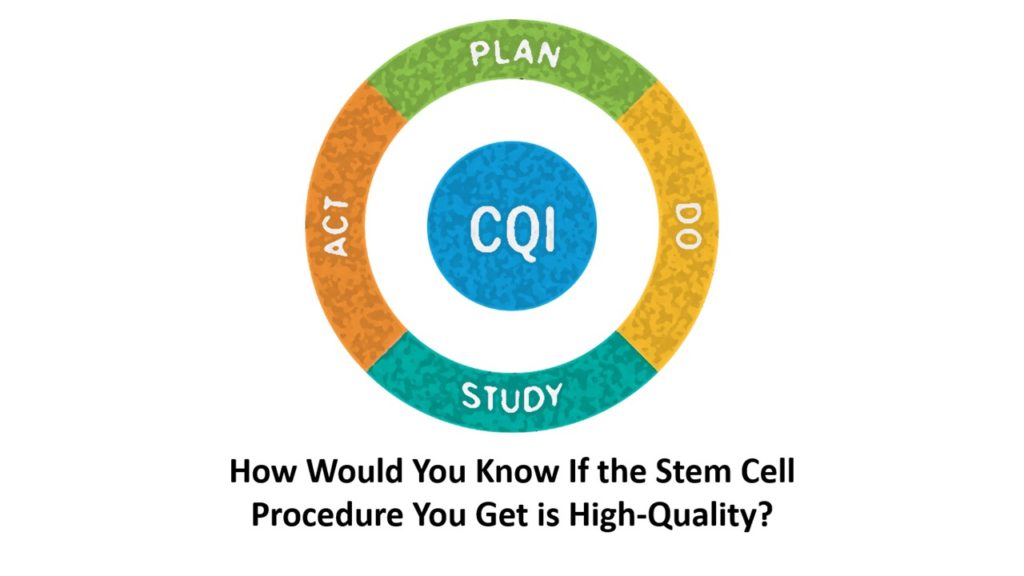Stem Cell Procedure Quality: How Would You Know?

So you want to avoid surgery? How do you make sure that the doctors you chose are delivering high-quality Interventional Orthobiologic care? Let’s dive into what we do at Regenexx so that you can see how much there is to know and how much likely goes wrong out there outside of our network.
Interventional Orthobiologics
This means the precise image-guided injection of substances that can facilitate healing in the musculoskeletal system. This includes platelet-rich plasma, stem cells, and other things. To learn more, see my video below:
A Bone Marrow or Fat Stem Cell Procedure from Start to Finish
All stem cell procedures that come from your body (autologous) have three main parts:
- Harvest
- Processing
- Re-injection
The harvest is when the tissue is collected. The processing is how that tissue is processed to maximize the stem cell content. Finally, the re-injection is how those cells are reintroduced to the parts of your body that are damaged. To learn a few of the things we do at Regenexx to standardize all of that, let’s focus on a bone marrow stem cell procedure also called bone marrow concentrate.
The Harvest
For a bone marrow stem cell procedure, this is called a bone marrow aspiration (BMA). The area at the back of the hip is numbed up and then a specialized needle called a trocar is used to take some of the liquid portions of the bone marrow which is called an aspirate.
What could go wrong? How would you know? How do we monitor this?
The harvest is a part of this procedure that is critical, but despite that, if I were to take 100 physicians who perform this procedure, 90 are likely doing the harvest wrong and sacrificing the outcome of the procedure. What’s the right and wrong way to perform a BMA?
BMA The Right vs. Wrong Way
The number of stem cells the doctors obtain is directly related to taking small volumes from many spots. If the doctor takes larger volumes from fewer spots the stem cell number drops severely. Despite this well-researched fact, most physicians do what’s easiest and less time consuming for them (drawing more marrow from fewer spots) rather than taking the time to maximize the number of stem cells harvested. To learn more, see my video below:
How do we enforce this across a network of almost 100 physicians? On the front end, all of our doctors are required to be educated through our education program. That’s simply not the case with the average doctor outside of our network who buys a new bedside centrifuge after taking a weekend course. On the back end, we monitor the Total Nucleated Cell Count (TNCC) of each doctor and each site.
That last part is critical, as that’s called a continuous quality assurance program. Given that less than 1% of doctors who are performing this procedure even count the cells at all, nobody else is monitoring their physicians to make sure they’re doing this right. Only Regenexx does that.
Processing
Once the cells are taken, they need to be processed to get the highest number of stem cells separated from the other cells. Almost always, this is done by a bedside machine that the doctor purchased. These machines aren’t very efficient, which is why we use a flexible lab platform. Meaning that a trained lab tech can produce a much higher stem cell content product than a simple bedside machine. However, who is monitoring all of this and how?
With both setups, there is always the concern that the processing can introduce bacterial contamination. In the bedside centrifuge case, nobody tests these units for bacterial contamination. In our case, each site is required to undergo regular bacterial monitoring. If any risk is detected, that lab is closed, cleaned, and retested. That bedside machine? Again, nobody is monitoring it.
On the educational side, how do you know if the staff using the bedside machine knows how to use it? Nobody is monitoring that either. With our flexible lab platform, the processors are again monitored on an ongoing basis to make sure they know what they’re doing.
To learn more, see my video below:
Re-injection
In order for these procedures to work, the bone marrow concentrate has to be carefully placed using imaging guidance into the right spot. How can you as a patient know that’s happening? For example, that your doctor has that knowledge? Don’t all doctors know how to do that? Nope.
Again, out of about 100 physicians performing these procedures, only about 10 have any advanced knowledge of how to place the cells where they need to go. If you add in nurses and physician’s assistants performing these procedures, that drops to 1 in 100. At Regenexx we only accept doctors who have certain levels of training in image-guided injections. We then force them to get additional training and maintain that training at high levels. The rest of the world? Good luck. There is nobody enforcing training standards.
Here’s a video that shows you how the simplest injection we perform at Regenexx (inside a knee joint using ultrasound guidance) is actually not so easy:
The upshot? At the end of the day, as I always say, it’s the wild west out there. Outside of Regenexx, nobody is enforcing any of these standards. So please be careful!

If you have questions or comments about this blog post, please email us at [email protected]
NOTE: This blog post provides general information to help the reader better understand regenerative medicine, musculoskeletal health, and related subjects. All content provided in this blog, website, or any linked materials, including text, graphics, images, patient profiles, outcomes, and information, are not intended and should not be considered or used as a substitute for medical advice, diagnosis, or treatment. Please always consult with a professional and certified healthcare provider to discuss if a treatment is right for you.
